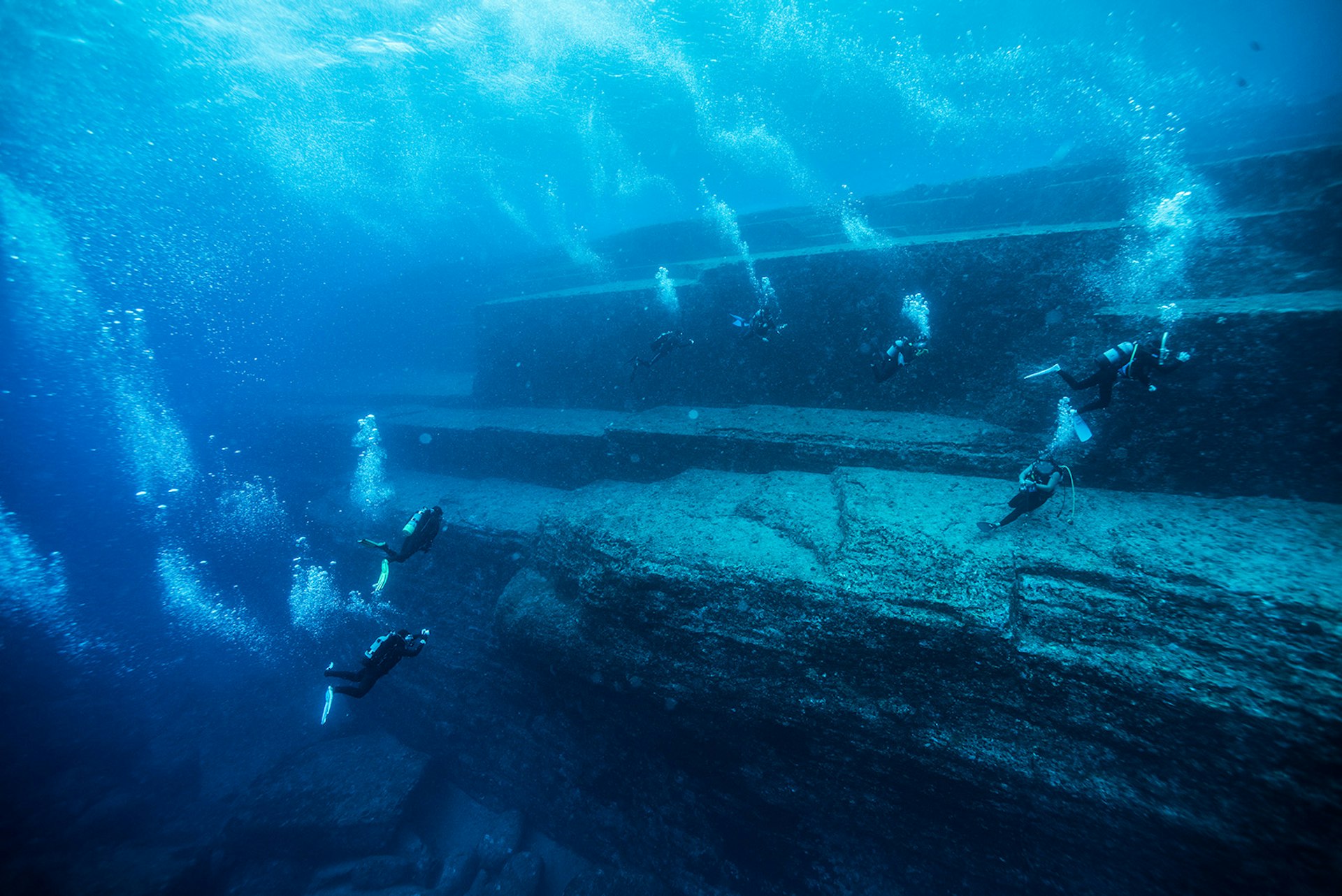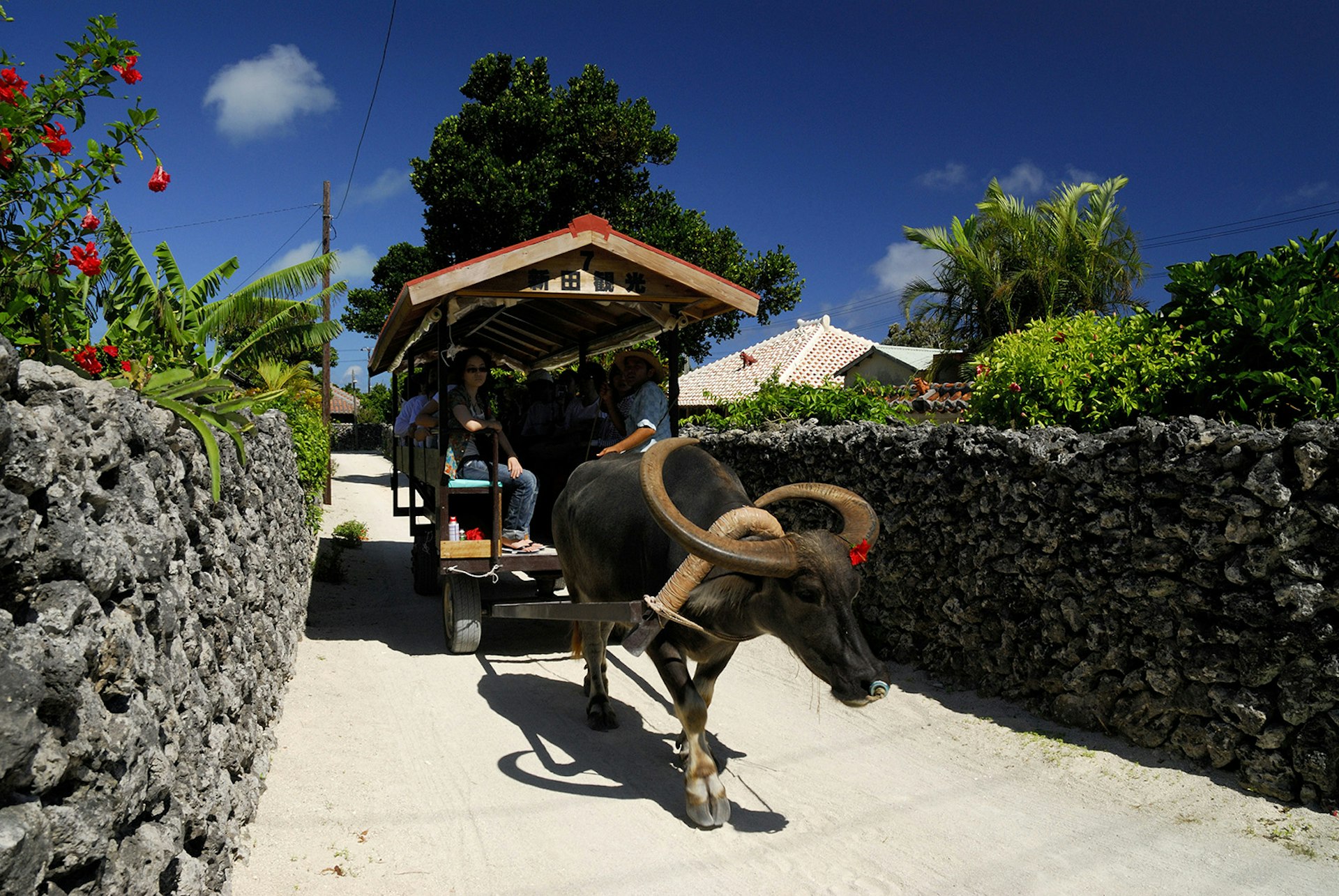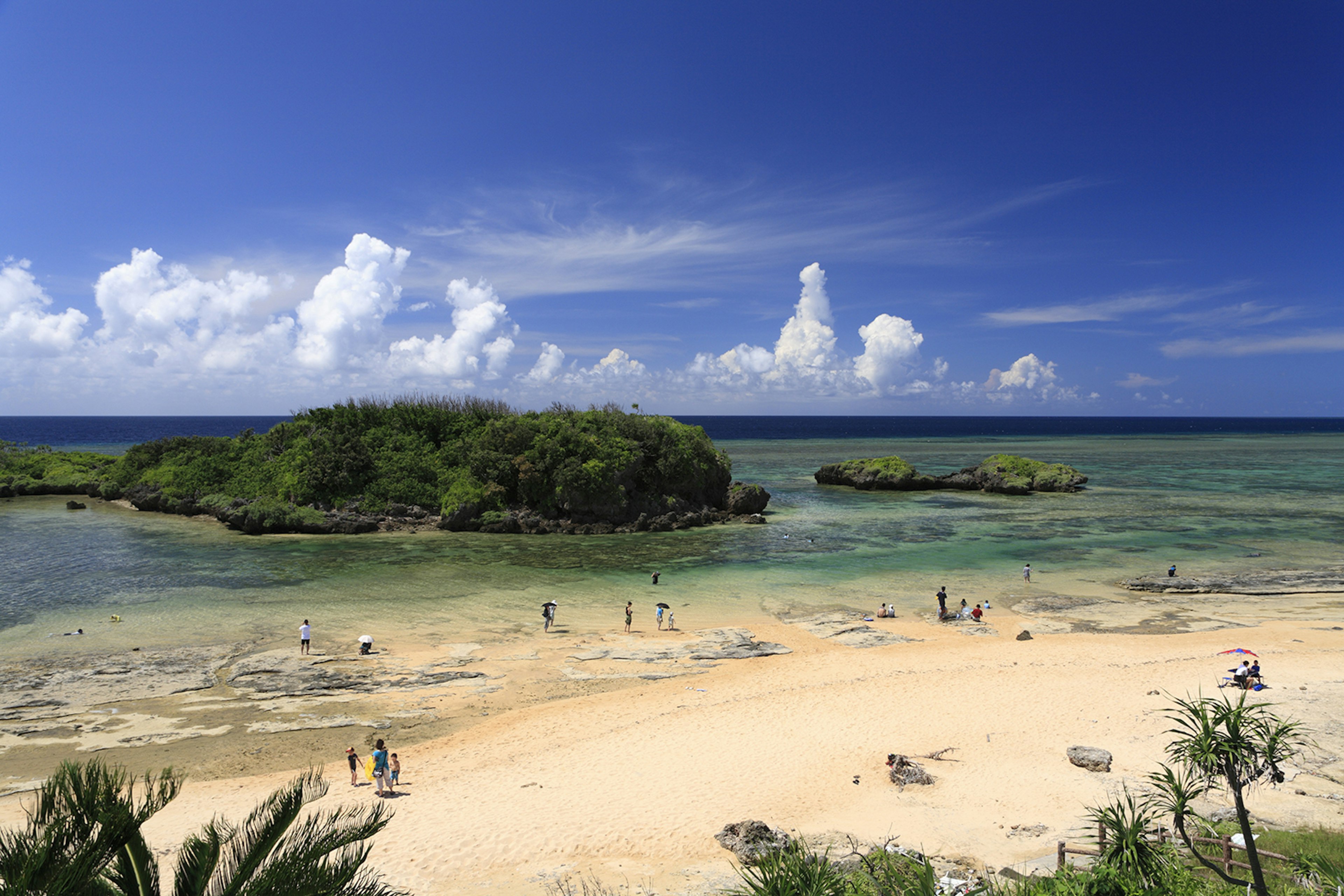Though Japanese visitors have winged their way south for years, the secret is out. Okinawa and the southwestern islands have all the white-sand beaches and entrancingly clear blue waters of your tropical fantasies, but the island chain's less conventional attractions make them enticingly worth the time and expense to hop south for some Okinawan R&R.

Snorkel, dive and mystery-seek
While scuba and snorkelling hardly count as unique, you will find great diversity in the wild blue under, from mass manta encounters to super-accessible snorkelling that even little kids can splash into. Floating around in bathtub-warm water, watching real-life Nemos and Dorys dart by, or spotting sea turtles placidly grazing on algae – what's not to love?
You can rent snorkelling gear at any beach on any island worth its salt. And even if you're not a certified diver, introductory dive courses can be booked on various islands. One of the challenges is finding English-speaking instructors and guides, but a handful of dive shops such as Piranha Divers (piranha-divers.jp) and Reef Encounters (reefencounters.org) on Okinawa-hontō (Okinawa's main island) and Umicoza (umicoza.com) on Ishigaki-jima have multilingual guides on staff.

More experienced divers with a taste for mystery should book a flight to Yonaguni-jima, Japan's westernmost inhabited island. Off the rugged southern coast, where wild island horses graze on the windswept bluffs, the surface of the sea conceals a spectacular set of 'ruins' that a local diver discovered in the '80s. With surfaces and walls jutting up at 90-degree angles, and features suggestive of passageways and stairs, some believe that the blocky rock formations are remnants of a Japanese Atlantis. However, geologists theorise (less glamorously) that these unusual formations probably occurred naturally. Either way, the maybe-not-actually ruins are a fascinating dive site to explore and are singular to Yonaguni-jima. If the geology doesn't float your boat, then be sure to visit during the winter, when most divers come for the thrill of swimming among schooling hammerhead sharks (your relaxation miles may vary).
Take five on Taketomi-jima
Five hours on Taketomi-jima will reset your stress levels by transporting you back about five decades to simpler times.
From Ishigaki-jima, the hub of the Yaeyama island group, tiny Taketomi-jima is a fifteen-minute ferry ride into the past. At last count its population was 361, and these few hundred residents have fiercely preserved their island's heritage, which is evident as soon as you arrive. The roads are blanketed with crushed coral that crunches underneath the bicycle tires most visitors rent for getting around. Bougainvillea-festooned walls lining the roads are also constructed of stacked chunks of coral, and all of the island-village buildings are roofed with red clay tiles. This low-scale vernacular architecture is topped with the traditional Okinawan shiisā, the pairs of lion guardians that invite good spirits in and keep bad spirits out. The effect is beautifully and tenaciously traditional.
Even if you don't speak Japanese, another way of getting around the island is on an ox-pulled cart. You won't get anywhere in a hurry, but as the gigantic-hoofed oxen plod along the zig-zagging crushed coral roads, their Japanese-speaking drivers talk story and plink out a few traditional songs on the three-stringed sanshin (Okinawan banjo), the ride itself making it worth the trip.

But even while this island's devotion to tradition is alluring on its own, Taketomi-jima has one more bit of magic for you: star sand. Pedal your one-speed bike down to Kaiji-hama, a beach on the southwest coast, to hunt for star sand, a rare phenomenon unique to certain beaches in Okinawa and other Asian-Pacific shores. The 'sand,' shaped like variously pointed stars, is made up of the exoskeletons of tiny marine protozoa that wash up on shore. Walk down to the water's edge to wet your hand, press your palm onto the beach and see how many grains of star sand have stuck: instant, joyous, meditative wonder.
Get crafty
There's a reason art therapy exists. Humans have always created things with our hands, and though many of us don't incorporate the act of art making into our daily lives, Picasso once allegedly said, 'Every child is an artist. The problem is how to remain an artist once (s)he grows up.' This problem is easily solved, and the solution often results in secondary positive consequences – like a sense of well-being, or... souvenirs.
Okinawan arts are alive and kicking, as you will hear in the cheery sanshin-heavy soundtrack of restaurants and bars, and as you'll see in the textile design of traditional fabrics or the beautifully-glazed, daily use ceramics sold in the Tsuboya pottery district of Naha, Okinawa's capital city. Slowing down to spend a few hours learning the basics of creating Okinawan art can be a relaxing way to participate in its cultural traditions while also focusing on a rewarding, physically engaged project.

To get your hands dirty crafting some of your own Okinawan art, book a workshop at Naha City Traditional Arts & Crafts Center. You can try your hand at molding clay shiisā to guard your own home, or painting the brightly-coloured flower and wildlife designs of bingata, a wax-resist method of painting on fabric, or blowing glass.
On Ishigaki-jima, you can learn to weave the coded messages of love and devotion at Minsā Kogeikan. Look around as you roam the city and island, and you'll notice the geometric patterns of minsā (traditional weaving) echoed in the designs of local architecture, street markings and artwork. One of the more ubiquitous patterns of minsā is the alternating five-four design, which is a play on words that essentially means 'together forever.' Romance in message and action. Feel the love, make art and spread it around! Okinawa is fertile ground.
Last updated in November 2017.

